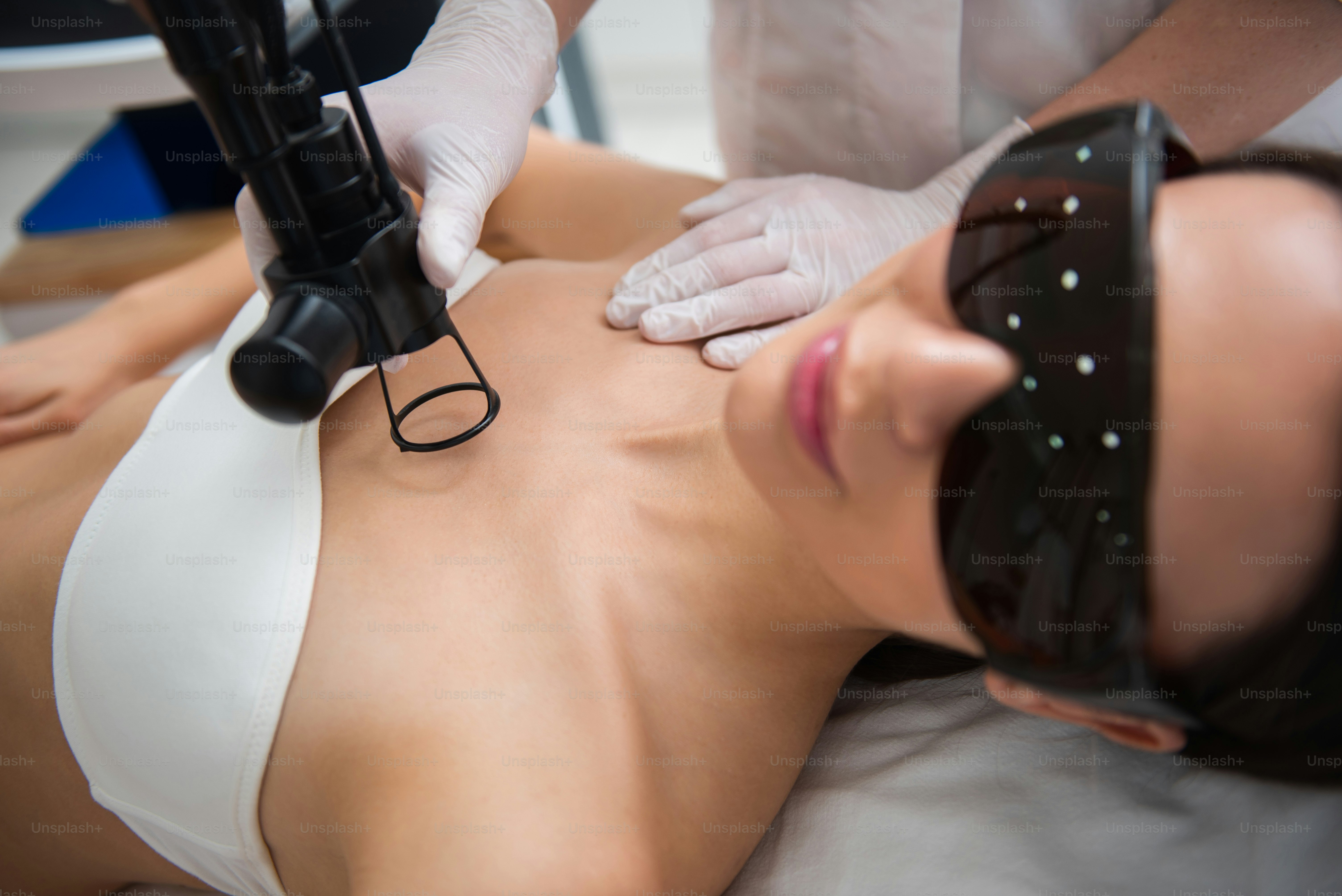Average Number Of Laser Hair Removal Treatments

Laser hair removal has gained significant reputation as an efficient methodology for reaching smooth skin without the effort of traditional hair removal techniques. However, many people could encounter variable outcomes from these treatments, often influenced by a range of factors. How Many Laser Treatments To Achieve Hair-Free Legs. One important facet that significantly affects outcomes is hormonal adjustments within the physique. Understanding how these hormonal fluctuations interact with laser hair removal can help people make knowledgeable decisions relating to their treatments
Hormonal adjustments can occur as a outcome of various reasons, corresponding to puberty, being pregnant, menstruation, menopause, and conditions like polycystic ovary syndrome. Each of these phases brings about distinctive shifts in hormone ranges, which can directly impact hair development patterns and the effectiveness of laser treatments. For example, during puberty, a rise in androgens, a gaggle of hormones that includes testosterone, can lead to extra strong hair progress, significantly in areas where individuals may not need it, such because the face or physique.
During being pregnant, girls experience a surge in hormones similar to estrogen and progesterone. This hormonal shift can result in alterations in hair growth. Some women may discover thicker or more ample hair, whereas others could experience the alternative effect. Laser hair removal may not be best during this stage due to the rapidly changing hormonal landscape. Medical professionals often advocate waiting until after childbirth to resume laser treatments.
How Many Laser Hair Removal Sessions For Upper Body
The menstrual cycle also brings about hormonal fluctuations that may affect hair development and skin sensitivity. For many ladies, the week leading as a lot as menstruation sees an increase in androgens, which can stimulate hair follicles. Laser therapies carried out throughout this time may not yield the best outcomes. Furthermore, hormonal changes can heighten skin sensitivity, rising the likelihood of unwanted side effects such as redness or swelling.
Menopause marks another important transition in hormonal balance for ladies. The lower in estrogen ranges can result in adjustments in hair growth patterns. Some girls may find that hair becomes thinner in certain areas whereas changing into coarser and extra cussed in others. This unpredictability can affect how well laser hair removal works. It might necessitate changes in treatment protocols or the number of sessions required.
How Many Sessions For Laser Hair Removal To Be Effective
Polycystic ovary syndrome is a condition marked by hormonal imbalance and can result in increased hair growth in undesirable areas. For those dealing with this syndrome, laser hair removal could additionally be a more useful gizmo. However, hormonal treatment for PCOS may affect hair development and removal outcomes. Individuals may must find a steadiness between managing their hormonal treatment and committing to laser sessions.
Hormones can even affect skin color and texture, both very important elements when it comes to laser hair removal. The remedy works best when there's a strong contrast between the hair color and the encircling skin. Hormonal modifications that result in elevated pigmentation or uninteresting skin can impair the laser's ability to target hair follicles successfully. Those in search of treatment must be sure that their skin tone remains constant earlier than and through the sessions.
Understanding the technology behind laser hair removal processes also sheds light on how hormonal fluctuations can impact results. The procedure typically depends on the absorption of targeted light by the pigment in hair follicles. If hormonal changes lead to variations in hair pigmentation, it might lead to less efficient therapy outcomes. Darker hair typically absorbs the sunshine better than lighter shades, and changes in hormone ranges can sometimes lead to variations in hair color, affecting the overall effectiveness of the process.
How Many Laser Hair Removal Sessions Are Enough
Laser hair removal results on dark skin
Timing is one other important think about scheduling laser hair removal sessions. For people experiencing hormonal modifications, strategizing the timing of appointments can be pivotal. Hormonal cycles can vary in size and depth based mostly on personal health and environmental factors. Recognizing when hormonal ranges stabilize might help patients achieve essentially the most passable results.
In many cases, a personalized method to laser hair removal can lead to higher outcomes. Consulting with healthcare providers who are conscious of the individual's hormonal standing allows for a tailor-made remedy plan. They can provide insights into the best instances for laser sessions and advocate alternative therapies or approaches if hormonal fluctuations are vital. Furthermore, preserving an open line of communication about any modifications in well being or medication use also can contribute to the success of hair removal therapies.
Post-treatment care is essential for everyone, particularly these experiencing hormonal modifications. Proper skincare after laser sessions can mitigate unwanted side effects and optimize results. Utilizing moisturizing lotions or soothing brokers may help calm any skin irritation that may arise because of hormonal sensitivities. Maintaining a great skincare routine assists with therapeutic and retains skin in the finest possible situation for subsequent sessions.
How Many Laser Sessions Needed For Permanent Results
In conclusion, understanding how hormonal changes affect laser hair removal results is essential for anybody considering this treatment. Hormonal fluctuations can significantly influence hair growth patterns, skin sensitivity, and therapy effectiveness. Being conscious of these changes and speaking them to medical professionals could make a considerable distinction in reaching desired outcomes. Tailoring treatment plans and timing in accordance with hormonal cycles might result in more satisfying experiences with laser hair removal, ultimately permitting people to realize the smooth skin they need.
- Fluctuations in hormones can lead to adjustments in hair density and progress cycles, doubtlessly affecting the effectiveness of laser hair removal therapies.
- Hormonal imbalances, such as these brought on by conditions like polycystic ovary syndrome (PCOS), could end in increased hair growth, necessitating extra frequent sessions for desired outcomes.
How Many Laser Hair Removal Treatments For Back
- Estrogen and progesterone ranges that fluctuate throughout menstrual cycles could cause momentary variations in hair traits, influencing how lasers work together with the hair follicles.
- Hormonal adjustments during pregnancy can affect hair growth patterns, which could result in altered responsiveness to laser treatment, often requiring an adjusted approach post-pregnancy.

- Increased testosterone levels, whether as a result of pure variations or medical situations, may result in coarser and thicker hair, making it extra immune to laser hair removal methods.
How Many Laser Treatments For Thick Hair Removal
- Individuals present process hormone alternative remedy must contemplate how these adjustments may result in increased hair regrowth, impacting the overall results of their therapy plan.
- The timing of laser sessions in relation to hormonal cycles can optimize effectiveness; for instance, scheduling remedies in the course of the follicular section when estrogen is larger might yield higher results.
- Post-treatment hormonal fluctuations can have an effect on skin sensitivity and healing, doubtlessly complicating recovery and necessitating changes in aftercare protocols.
- Hormonal modifications associated with growing older can end result in slower hair progress charges, which may influence the frequency of therapies wanted over time.
How Many Laser Treatments To Achieve Hair-Free Legs
- Understanding the interplay between hormonal changes see this site and hair growth might help practitioners customize laser hair visit the website removal plans, ensuring better outcomes tailored to individual needs.
What hormonal components can affect laser hair removal effectiveness?
Hormonal fluctuations, similar to those occurring during menstruation, being pregnant, or menopause, can influence hair growth cycles and hair density. These changes can have an effect on how nicely laser hair removal therapies work, as the laser targets actively growing hairs.
How Many Laser Hair Removal Sessions For Legs
Is laser hair removal safe throughout hormonal changes?
Yes, laser hair removal is generally protected throughout hormonal adjustments, but outcomes may vary. It's important to consult with a certified practitioner who can assess your specific situation and regulate therapy plans accordingly.
Can hormonal imbalances affect hair regrowth after laser treatments? (How Many Laser Hair Removal Treatments For Chest)
Yes, hormonal imbalances can result in increased hair regrowth even after laser therapies. Conditions like polycystic ovary syndrome (PCOS) could cause hormonal shifts which will require further sessions for optimum results.
How Many Laser Hair Removal Treatments To Remove All Hair
How soon after hormonal adjustments should I schedule laser hair removal?
It's advisable to attend until hormonal ranges stabilize before present process laser hair removal. If you’re experiencing vital hormonal shifts, consult your practitioner for personalised timing suggestions to ensure efficient outcomes.

How do different hair varieties influenced by hormones have an effect on laser treatments?
Hormonal adjustments can affect hair texture and color, impacting the effectiveness of laser treatments. Lasers generally work greatest on darkish, coarse hair as a result of they target melanin, so hormonal shifts that alter hair characteristics might necessitate changes in therapy.
How Many Laser Treatments To Achieve Hair-Free Legs
Are there particular hormones that practitioners think about before treatment?
Yes, practitioners usually think about and assess hormones like estrogen and testosterone during consultations. These hormones can influence hair growth patterns and the general success of laser hair removal.
Can I still see results during hormonal fluctuations?
How Many Laser Hair Removal Sessions For Brazilian
While you can still obtain outcomes during hormonal fluctuations, the effectiveness could also be diminished. It's important to manage expectations and communicate brazenly along with your provider about any changes you’re experiencing.
Should I inform my practitioner about hormonal changes before treatment?
Absolutely. Sharing details about hormonal adjustments permits your practitioner to tailor the therapy plan higher, contemplating components that will impact the effectiveness and safety of laser hair removal.
What ought to I do if I discover increased hair growth after treatments? - How Many Laser Sessions For Light Hair Removal
How Many Sessions For Permanent Hair Removal
If you discover increased hair development after treatments, notably related to hormonal modifications, seek the guidance of your practitioner. They can evaluate your scenario and may suggest further therapies or a revised approach to deal with the problem.